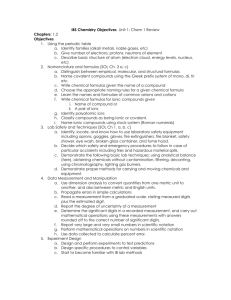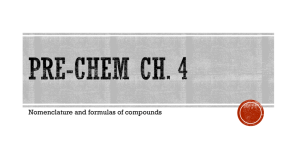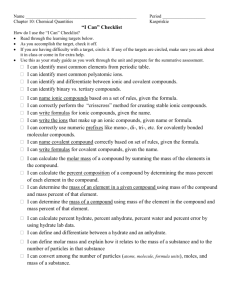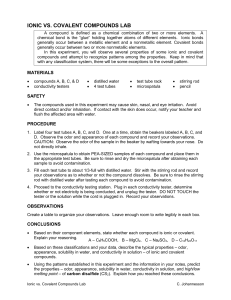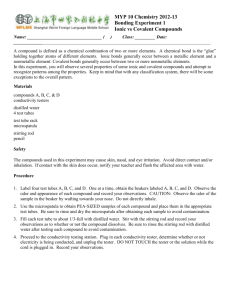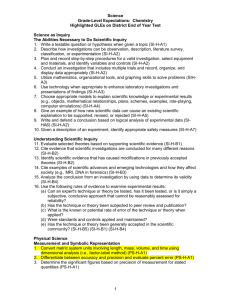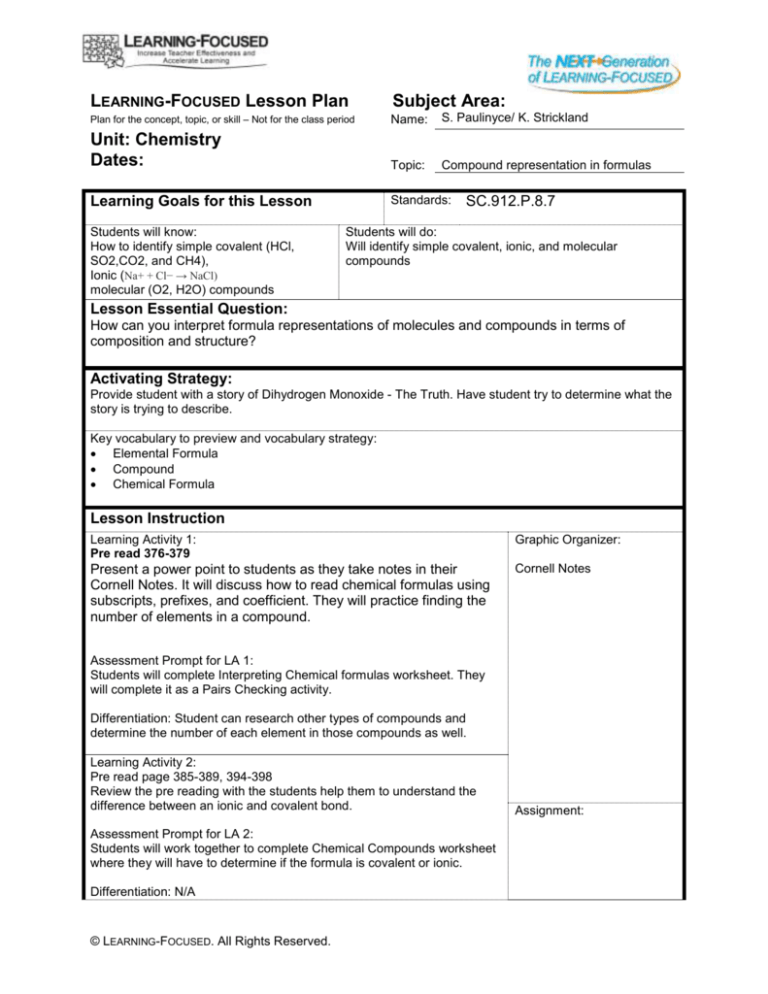
LEARNING-FOCUSED Lesson Plan
Subject Area:
Plan for the concept, topic, or skill – Not for the class period
Name:
S. Paulinyce/ K. Strickland
Unit: Chemistry
Dates:
Topic:
Compound representation in formulas
Learning Goals for this Lesson
Standards:
Students will know:
How to identify simple covalent (HCl,
SO2,CO2, and CH4),
Ionic (Na+ + Cl− → NaCl)
molecular (O2, H2O) compounds
SC.912.P.8.7
Students will do:
Will identify simple covalent, ionic, and molecular
compounds
Lesson Essential Question:
How can you interpret formula representations of molecules and compounds in terms of
composition and structure?
Activating Strategy:
Provide student with a story of Dihydrogen Monoxide - The Truth. Have student try to determine what the
story is trying to describe.
Key vocabulary to preview and vocabulary strategy:
Elemental Formula
Compound
Chemical Formula
Lesson Instruction
Learning Activity 1:
Pre read 376-379
Graphic Organizer:
Present a power point to students as they take notes in their
Cornell Notes. It will discuss how to read chemical formulas using
subscripts, prefixes, and coefficient. They will practice finding the
number of elements in a compound.
Cornell Notes
Assessment Prompt for LA 1:
Students will complete Interpreting Chemical formulas worksheet. They
will complete it as a Pairs Checking activity.
Differentiation: Student can research other types of compounds and
determine the number of each element in those compounds as well.
Learning Activity 2:
Pre read page 385-389, 394-398
Review the pre reading with the students help them to understand the
difference between an ionic and covalent bond.
Assessment Prompt for LA 2:
Students will work together to complete Chemical Compounds worksheet
where they will have to determine if the formula is covalent or ionic.
Differentiation: N/A
© LEARNING-FOCUSED. All Rights Reserved.
Assignment:
Learning Activity 3:
Assessment Prompt for LA 3:
Differentiation:
Summarizing Strategy:
Answer the LEQ in Cornell Notes
Student
Modification/Accommodations
1. Seat student near teacher.
2. Stand near student when giving
directions/presenting.
3. Provide visual aids/graphic organizers.
4. Ensure oral directions are understood.
5. Allow extra time to complete tasks.
6. Simplify complex written directions.
7. Give test items orally.
8. Provide peer assistance/study groups.
© LEARNING-FOCUSED. All Rights Reserved.


